-
 Bitcoin
Bitcoin $85,620.5431
0.86% -
 Ethereum
Ethereum $1,897.3122
-0.11% -
 Tether USDt
Tether USDt $1.0002
0.02% -
 XRP
XRP $2.1269
0.07% -
 BNB
BNB $601.9446
-1.02% -
 Solana
Solana $129.2221
2.97% -
 USDC
USDC $0.9999
-0.01% -
 Dogecoin
Dogecoin $0.1725
0.66% -
 Cardano
Cardano $0.6822
1.06% -
 TRON
TRON $0.2380
0.58% -
 Toncoin
Toncoin $3.9628
-1.77% -
 Chainlink
Chainlink $13.8245
-1.78% -
 UNUS SED LEO
UNUS SED LEO $9.4229
0.68% -
 Stellar
Stellar $0.2688
-1.15% -
 Sui
Sui $2.4659
2.25% -
 Avalanche
Avalanche $19.2191
-0.67% -
 Shiba Inu
Shiba Inu $0.0...01259
-0.08% -
 Hedera
Hedera $0.1738
2.43% -
 Litecoin
Litecoin $85.8036
1.94% -
 Polkadot
Polkadot $4.1113
-0.65% -
 MANTRA
MANTRA $6.4509
2.66% -
 Bitcoin Cash
Bitcoin Cash $307.3141
-0.43% -
 Bitget Token
Bitget Token $4.5887
-0.44% -
 Dai
Dai $0.9996
-0.05% -
 Ethena USDe
Ethena USDe $0.9999
0.00% -
 Pi
Pi $0.6755
-4.64% -
 Hyperliquid
Hyperliquid $13.5037
1.72% -
 Monero
Monero $220.7326
1.83% -
 Uniswap
Uniswap $6.2125
-0.90% -
 Aptos
Aptos $5.3963
0.94%
What does golden cross and dead cross of KDJ indicator mean?
The KDJ indicator, used by crypto traders, signals potential buy or sell opportunities through golden and dead crosses, aiding in strategic trading decisions.
Apr 02, 2025 at 02:08 am
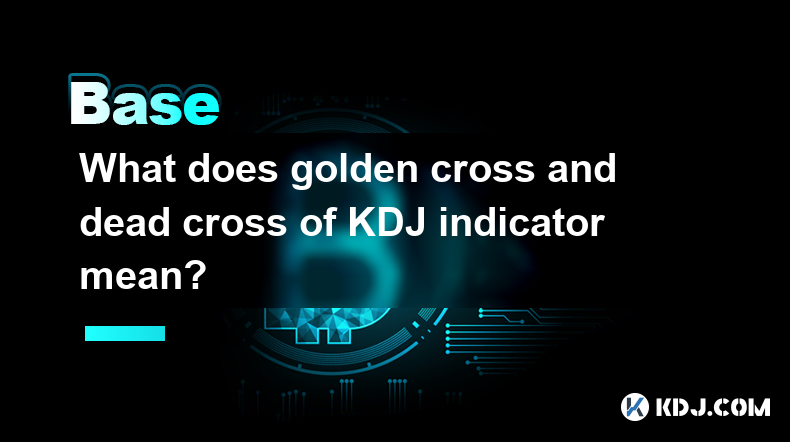
The KDJ indicator, also known as the Stochastic Oscillator, is a popular technical analysis tool used by cryptocurrency traders to identify potential buy and sell signals. It consists of three lines: K, D, and J, which fluctuate between 0 and 100. The golden cross and dead cross of the KDJ indicator are important signals that traders look for to make informed trading decisions. Understanding these signals can help traders optimize their strategies and potentially increase their chances of success in the volatile cryptocurrency market.
What is the KDJ Indicator?
The KDJ indicator is a momentum oscillator that measures the relationship between an asset's closing price and its price range over a specified period. It is based on the idea that when an asset's price closes near the high of its recent range, it is considered overbought, and when it closes near the low, it is considered oversold. The KDJ indicator is calculated using the following formulas:
- K = (Current Close - Lowest Low) / (Highest High - Lowest Low) * 100
- D = 3-day simple moving average of K
- J = 3 K - 2 D
The K line represents the current market momentum, the D line is a smoothed version of the K line, and the J line is a more sensitive indicator that can provide early signals of potential trend reversals.
What is a Golden Cross in the KDJ Indicator?
A golden cross in the KDJ indicator occurs when the K line crosses above the D line from below. This signal is considered bullish and suggests that the momentum of the asset is shifting from bearish to bullish. Traders often interpret a golden cross as a potential buy signal, indicating that the asset's price may continue to rise in the near future.
When a golden cross occurs, it is important to consider the overall market context and other technical indicators to confirm the signal. A golden cross that occurs when the KDJ indicator is in the oversold region (below 20) is considered more reliable than one that occurs in the neutral or overbought regions.
What is a Dead Cross in the KDJ Indicator?
A dead cross in the KDJ indicator occurs when the K line crosses below the D line from above. This signal is considered bearish and suggests that the momentum of the asset is shifting from bullish to bearish. Traders often interpret a dead cross as a potential sell signal, indicating that the asset's price may continue to decline in the near future.
Similar to a golden cross, it is crucial to consider the overall market context and other technical indicators when a dead cross occurs. A dead cross that happens when the KDJ indicator is in the overbought region (above 80) is generally considered more reliable than one that occurs in the neutral or oversold regions.
How to Use Golden and Dead Crosses in Cryptocurrency Trading
Traders can use golden and dead crosses of the KDJ indicator to make informed trading decisions in the cryptocurrency market. Here are some steps to consider when using these signals:
- Identify the golden and dead crosses on the KDJ indicator chart
- Confirm the signal by analyzing other technical indicators, such as the Relative Strength Index (RSI) or Moving Average Convergence Divergence (MACD)
- Consider the overall market trend and sentiment
- Set appropriate entry and exit points based on the signal and risk management strategy
- Monitor the trade and adjust the strategy as needed
It is important to note that no single indicator or signal can guarantee success in trading. Traders should always use a combination of technical analysis tools and risk management strategies to make well-informed decisions.
Common Mistakes to Avoid When Using KDJ Indicator Signals
While the golden and dead crosses of the KDJ indicator can be valuable tools for cryptocurrency traders, there are some common mistakes to avoid when using these signals:
- Relying solely on the KDJ indicator without considering other technical indicators or market factors
- Entering or exiting trades too early or too late based on the signals
- Ignoring the overall market trend and sentiment
- Overtrading based on every golden or dead cross signal
- Failing to set appropriate stop-loss and take-profit levels
By being aware of these potential pitfalls and using the KDJ indicator signals in conjunction with other analysis tools, traders can improve their chances of success in the cryptocurrency market.
Examples of Golden and Dead Crosses in Cryptocurrency Trading
To better understand how golden and dead crosses of the KDJ indicator work in practice, let's look at a few examples from the cryptocurrency market:
Bitcoin (BTC) Golden Cross Example: In early 2023, the KDJ indicator for Bitcoin showed a golden cross when the K line crossed above the D line from below. This signal occurred when the KDJ was in the oversold region, and it was followed by a significant price increase in Bitcoin over the next few weeks.
Ethereum (ETH) Dead Cross Example: In mid-2022, the KDJ indicator for Ethereum displayed a dead cross when the K line crossed below the D line from above. This signal happened when the KDJ was in the overbought region, and it was followed by a notable price decline in Ethereum over the subsequent days.
Litecoin (LTC) Golden Cross Example: In late 2021, the KDJ indicator for Litecoin exhibited a golden cross when the K line crossed above the D line from below. This signal occurred when the KDJ was in the neutral region, and it was followed by a moderate price increase in Litecoin over the next few days.
These examples demonstrate how golden and dead crosses of the KDJ indicator can provide valuable insights into potential price movements in the cryptocurrency market.
Combining KDJ Indicator Signals with Other Technical Analysis Tools
To increase the reliability of golden and dead cross signals from the KDJ indicator, traders often combine them with other technical analysis tools. Some popular tools to consider include:
Relative Strength Index (RSI): The RSI is another momentum oscillator that can help confirm overbought or oversold conditions in the market. When the KDJ indicator shows a golden cross and the RSI is below 30, it may indicate a stronger bullish signal.
Moving Average Convergence Divergence (MACD): The MACD is a trend-following momentum indicator that can help identify potential trend reversals. When the KDJ indicator shows a dead cross and the MACD line crosses below the signal line, it may suggest a more reliable bearish signal.
Support and Resistance Levels: Identifying key support and resistance levels on the price chart can help traders determine potential entry and exit points based on KDJ indicator signals. A golden cross near a strong support level may indicate a higher probability of a successful trade.
By combining the KDJ indicator with other technical analysis tools, traders can gain a more comprehensive understanding of market conditions and make more informed trading decisions.
Adjusting KDJ Indicator Settings for Cryptocurrency Trading
The default settings for the KDJ indicator are typically set to a 9-period lookback for the K line and a 3-period simple moving average for the D line. However, traders may find it beneficial to adjust these settings based on their trading style and the specific cryptocurrency they are trading.
- For short-term trading, traders may consider using a shorter lookback period, such as 5 or 7 periods, to generate more frequent signals.
- For long-term trading, traders may prefer a longer lookback period, such as 14 or 21 periods, to filter out short-term noise and focus on more significant trends.
- Some traders also experiment with different moving average periods for the D line, such as 2 or 4 periods, to adjust the sensitivity of the indicator.
It is important to backtest different KDJ indicator settings using historical data to determine which configuration works best for a particular cryptocurrency and trading strategy.
Limitations and Risks of Using KDJ Indicator Signals
While the golden and dead crosses of the KDJ indicator can be valuable tools for cryptocurrency traders, it is essential to be aware of their limitations and associated risks:
False Signals: Like any technical indicator, the KDJ indicator can generate false signals, especially in choppy or sideways markets. Traders should always use additional confirmation tools and risk management strategies to minimize the impact of false signals.
Lag: The KDJ indicator is a lagging indicator, meaning that it may not always provide timely signals in fast-moving markets. Traders should be cautious when relying solely on the KDJ indicator for entry and exit decisions.
Over-reliance: Traders who become overly reliant on the KDJ indicator may neglect other important factors, such as fundamental analysis, market sentiment, and risk management. It is crucial to use the KDJ indicator as part of a comprehensive trading strategy.
Whipsaws: In volatile markets, the KDJ indicator may generate multiple golden and dead crosses in a short period, leading to whipsaws and potential losses. Traders should be prepared to adapt their strategies and use appropriate stop-loss levels to manage risk.
By understanding these limitations and risks, traders can use the KDJ indicator more effectively and make more informed decisions in the cryptocurrency market.
Common Questions Related to Golden Cross and Dead Cross of KDJ Indicator
Q: What is the difference between a golden cross and a dead cross in the KDJ indicator?
A: A golden cross in the KDJ indicator occurs when the K line crosses above the D line from below, suggesting a potential bullish trend. In contrast, a dead cross happens when the K line crosses below the D line from above, indicating a potential bearish trend.
Q: How can I use golden and dead crosses of the KDJ indicator in my cryptocurrency trading strategy?
A: To use golden and dead crosses of the KDJ indicator in your cryptocurrency trading strategy, you can follow these steps:
- Identify the golden and dead crosses on the KDJ indicator chart
- Confirm the signal by analyzing other technical indicators, such as the RSI or MACD
- Consider the overall market trend and sentiment
- Set appropriate entry and exit points based on the signal and risk management strategy
- Monitor the trade and adjust the strategy as needed
Q: Are golden and dead crosses of the KDJ indicator reliable signals for cryptocurrency trading?
A: While golden and dead crosses of the KDJ indicator can provide valuable insights into potential price movements, they are not always reliable signals. Traders should use these signals in conjunction with other technical analysis tools, consider the overall market context, and implement proper risk management strategies to increase the reliability of their trading decisions.
Q: Can I use the KDJ indicator for both short-term and long-term cryptocurrency trading?
A: Yes, the KDJ indicator can be used for both short-term and long-term cryptocurrency trading. However, traders may need to adjust the indicator's settings based on their trading style and the specific cryptocurrency they are trading. Shorter lookback periods may be more suitable for short-term trading, while longer lookback periods may be better for long-term trading.
Q: What are some common mistakes to avoid when using KDJ indicator signals in cryptocurrency trading?
A: Some common mistakes to avoid when using KDJ indicator signals in cryptocurrency trading include:
- Relying solely on the KDJ indicator without considering other technical indicators or market factors
- Entering or exiting trades too early or too late based on the signals
- Ignoring the overall market trend and sentiment
- Overtrading based on every golden or dead cross signal
- Failing to set appropriate stop-loss and take-profit levels
Disclaimer:info@kdj.com
The information provided is not trading advice. kdj.com does not assume any responsibility for any investments made based on the information provided in this article. Cryptocurrencies are highly volatile and it is highly recommended that you invest with caution after thorough research!
If you believe that the content used on this website infringes your copyright, please contact us immediately (info@kdj.com) and we will delete it promptly.
- DoubleZero Protocol Launches Validator Funding Round, Targeting Existing Solana, Celestia, Sui, Aptos, and Avalanche Validators
- 2025-04-03 05:05:12
- This Classic Chart Pattern Could Send SUI Price Soaring: Expert Reveals the Key Level
- 2025-04-03 05:05:12
- Bitcoin Pepe (BPEP) is rewriting the rules of DeFi
- 2025-04-03 05:00:14
- The NFT marketplace X2Y2 is indeed scheduled to shut down its operations on April 30, 2025
- 2025-04-03 05:00:14
- Bitcoin's History During Market Turmoil Does Not Necessarily Encourage Its Chances of Success This Time
- 2025-04-03 04:55:12
- Bitcoin (BTC) price rallies by 5.53% as spot bids drive the market's bullish start to Q2
- 2025-04-03 04:55:12
Related knowledge
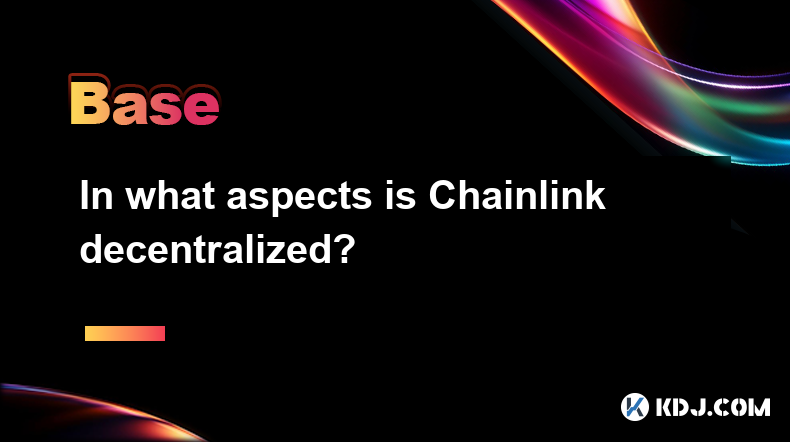
In what aspects is Chainlink decentralized?
Apr 02,2025 at 05:49pm
Chainlink is a decentralized oracle network that plays a crucial role in connecting smart contracts on blockchain networks with real-world data. Its decentralization is reflected in multiple aspects, ensuring the network's security, reliability, and integrity. This article delves into the various ways Chainlink achieves decentralization, including its n...

How does Chainlink connect smart contracts with real-world data?
Apr 02,2025 at 03:56pm
Chainlink is a decentralized oracle network that plays a crucial role in connecting smart contracts on blockchain platforms with real-world data. Smart contracts are self-executing contracts with the terms of the agreement directly written into code, but they can only interact with on-chain data. To access real-world data, such as stock prices, weather ...
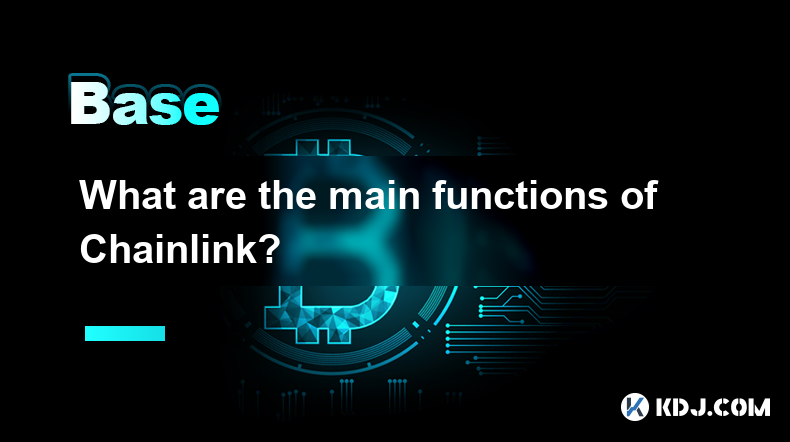
What are the main functions of Chainlink?
Apr 02,2025 at 11:49pm
Chainlink is a decentralized oracle network that plays a crucial role in connecting smart contracts with real-world data and external APIs. The primary function of Chainlink is to facilitate the seamless integration of off-chain data into on-chain smart contracts, enabling them to execute based on real-world events and information. This integration is v...

How does Chainlink work?
Apr 03,2025 at 01:50am
Chainlink is a decentralized oracle network that connects smart contracts with real-world data and external APIs. It plays a crucial role in the blockchain ecosystem by enabling smart contracts to interact with data outside their native blockchain environment. This connectivity is essential for smart contracts to execute based on real-world events and d...
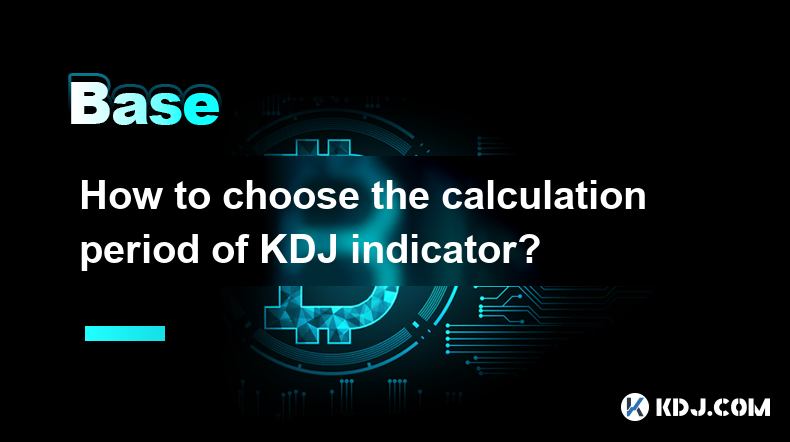
How to choose the calculation period of KDJ indicator?
Apr 02,2025 at 01:00pm
The KDJ indicator, also known as the Stochastic Oscillator, is a popular technical analysis tool used by cryptocurrency traders to identify potential buy and sell signals. The calculation period of the KDJ indicator is crucial in determining its effectiveness in predicting market trends. In this article, we will explore the factors to consider when choo...
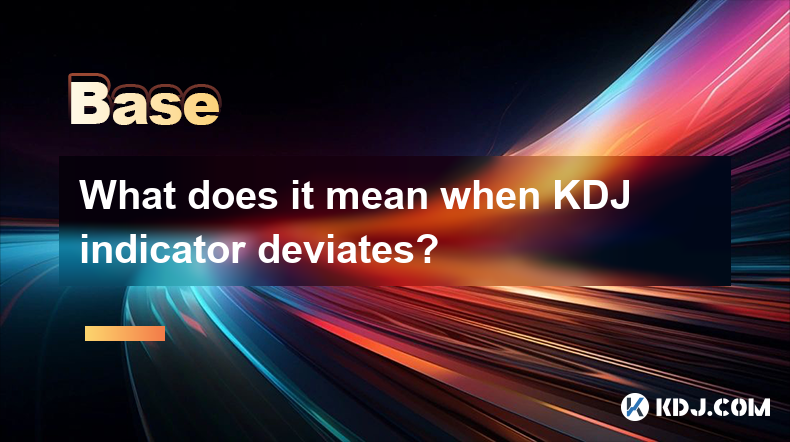
What does it mean when KDJ indicator deviates?
Apr 01,2025 at 03:08pm
The KDJ indicator, also known as the Stochastic Oscillator, is a popular technical analysis tool used in the cryptocurrency market to predict price movements. When the KDJ indicator deviates, it means that the current price of a cryptocurrency is moving away from its typical range, as indicated by the KDJ lines. This deviation can signal potential trend...

In what aspects is Chainlink decentralized?
Apr 02,2025 at 05:49pm
Chainlink is a decentralized oracle network that plays a crucial role in connecting smart contracts on blockchain networks with real-world data. Its decentralization is reflected in multiple aspects, ensuring the network's security, reliability, and integrity. This article delves into the various ways Chainlink achieves decentralization, including its n...

How does Chainlink connect smart contracts with real-world data?
Apr 02,2025 at 03:56pm
Chainlink is a decentralized oracle network that plays a crucial role in connecting smart contracts on blockchain platforms with real-world data. Smart contracts are self-executing contracts with the terms of the agreement directly written into code, but they can only interact with on-chain data. To access real-world data, such as stock prices, weather ...

What are the main functions of Chainlink?
Apr 02,2025 at 11:49pm
Chainlink is a decentralized oracle network that plays a crucial role in connecting smart contracts with real-world data and external APIs. The primary function of Chainlink is to facilitate the seamless integration of off-chain data into on-chain smart contracts, enabling them to execute based on real-world events and information. This integration is v...

How does Chainlink work?
Apr 03,2025 at 01:50am
Chainlink is a decentralized oracle network that connects smart contracts with real-world data and external APIs. It plays a crucial role in the blockchain ecosystem by enabling smart contracts to interact with data outside their native blockchain environment. This connectivity is essential for smart contracts to execute based on real-world events and d...

How to choose the calculation period of KDJ indicator?
Apr 02,2025 at 01:00pm
The KDJ indicator, also known as the Stochastic Oscillator, is a popular technical analysis tool used by cryptocurrency traders to identify potential buy and sell signals. The calculation period of the KDJ indicator is crucial in determining its effectiveness in predicting market trends. In this article, we will explore the factors to consider when choo...

What does it mean when KDJ indicator deviates?
Apr 01,2025 at 03:08pm
The KDJ indicator, also known as the Stochastic Oscillator, is a popular technical analysis tool used in the cryptocurrency market to predict price movements. When the KDJ indicator deviates, it means that the current price of a cryptocurrency is moving away from its typical range, as indicated by the KDJ lines. This deviation can signal potential trend...
See all articles
























































































